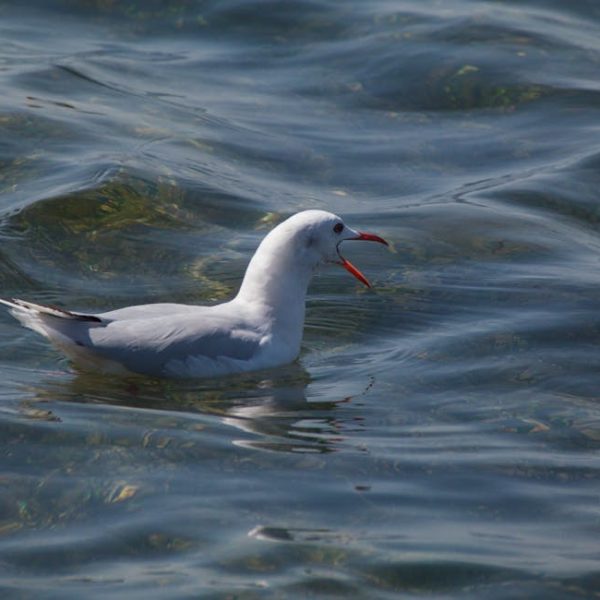Ever marvel at the boundless beauty and audacious vibrancy birds bring along? Whenever one lands near you, it feels like nature has paid you a visit, doesn’t it? However, birds, just like us humans, face survival challenges during adverse weather conditions like storms. To ensure their safety, they engage in fascinating behavior and make wise habitat selections. Keep reading to understand how birds weather the storm, literally.
The Behavioral Traits of Birds Before and During Storms
It’s intriguing how birds seem to predict weather changes more accurately than most meteorologists. Before storms set in, you will often notice a flurry of feathers partaking in frantic feeding, a crucial strategy for stocking as much nutrition as possible to endure the challenging times ahead. Additionally, birds navigate at lower altitudes, signaling an approaching storm.
However, the behaviors are not uniform across all bird species. For example, mighty eagles ride the high winds to quickly flee the storm path while small birds like sparrows often get grounded, nesting securely until the storm passes.
Pro Tip: Pay attention to significant changes in bird behavior such as increase in their feeding activity and shift in their flight patterns. Birds can act as natural barometers, providing you with a useful early warning system for impending weather changes!
The Types of Shelters Birds Use During Storms
When a storm comes a-knocking, birds seek refuge in an array of shelters:
-Tree Dwellers: Birds like robins and woodpeckers reside in the safety of tree foliage and cavities.
- Ground Nesters: These birds, such as quails and turkeys, find safety blending into the earthy tones between long grasses and low bushes.
- Man-made structures: Think barn swallows and city pigeons here, who take over our buildings, bridges, and birdhouses.
Pro Tip: Feathers in your cap if you’ve been nurturing bird-friendly environments by maintaining a diverse vegetation range in your garden or offering birdhouses! You have been giving your visiting chicks a lifesaver during stormy days.
The Effects of the Natural Environment on Bird Shelter
Birds’ shelters largely hinge on their immediate natural habitat. From hollow tree trunks in forests to small crevices nestled rainbows-high in skyscrapers in urban spaces, birds have a knack for making the best possible use of their environment to stay safe. Remarkably, they have adapted brilliantly to find shelter amidst environmental changes.
The Role of Bird Species in Shelter Selection
Just as we humans take pride in our cultural diversities and languages, birds too, it seems, swear by their species-specific traits when selecting their storm shelters. Each bird species has preferred shelters. For instance, parrots and woodpeckers might take shelter in tree holes, eagles and hawks may opt for high-perch nests, and pigeons in urban areas often huddle on building ledges.
| Species | Preferred Shelter |
|---|---|
| Woodpeckers | Tree Cavities |
| Eagles | High Treetops/Cliffs |
| Pigeons | Building Ledges |
How Can Humans Help Birds Find Shelter During Storms?
While birds are pros at navigating stormy situations, we can lend them a helping hand. By having different types of vegetation and birdhouses in our gardens, we can provide varied shelter options. Feeding birds can also be beneficial during storms and their aftermath since it helps them regain their energy quicker.
However, there’s a golden rule: Intervene minimally. While it’s good to aid them, let’s not forget that they also need to keep their survival instincts sharp.
Checklist to help birds:
- Secure and weatherproof your birdhouses.
- Offer a variety of plant species in your garden.
- Set up bird feeders.
Always remember, a little help from us can ‘literally’ be a lifesaver for these chirpy fellows during a storm!
Key Takeaway:
- Birds rely on instinctive behaviors, availability and type of shelter, specific adaptive traits, species, and human assistance for surviving storms.
- They sense atmospheric changes indicating upcoming storms and exhibit altered feeding, flight, and vocalization behaviors.
- Their shelters during storms range from natural environments like trees, crevices, and bushes to artificial ones like birdhouses and other man-made structures.
- The natural environment significantly influences their choice of shelter, but birds have adapted to find safety even in urban areas.
- The type of shelter a bird chooses is often species-specific; different species exhibit loyalty to certain habitats.
- Humans can assist by providing bird-friendly environments and feeding them during and after storms, done with minimal intervention to allow birds to preserve their survival instincts.
With this knowledge, we can better understand the struggle that birds go through during storms and how they manage to survive despite the odds. As humans, it’s important to respect their survival techniques and provide only the necessary assistance without disrupting their natural instincts. We have a crucial role in ensuring the safety of these winged wonders during severe storms.
FAQs
Q: Do all birds behave the same way during storms?
A: Not at all! Birds’ behavior during storms can widely vary based on their species. Some birds may group together, some may seek higher ground, while others may go silent before a storm.
Q: Are artificial bird shelters such as birdhouses safe during storms?
A: Yes, as long as they are securely fixed and weatherproof, birdhouses can provide valuable shelter during storms.
Q: How do birds find shelter in urban environments during storms?
A: In urban environments, birds have adapted to find shelter under building ledges, bridges, and other man-made structures.
Q: Do all birds use the same type of shelter?
A: No, the type of shelter a bird uses during a storm can greatly vary depending on their species and the environment they’re in.
Q: How can I help birds during a storm?
A: You can help by providing bird-friendly environments such as birdhouses and diverse vegetation. Post-storm, offering food can be beneficial but it should be done cautiously and minimally.
If you found this article enlightening, share it with nature lovers in your circle. For more insightful pieces about birds and other wildlife, browse through our website.












